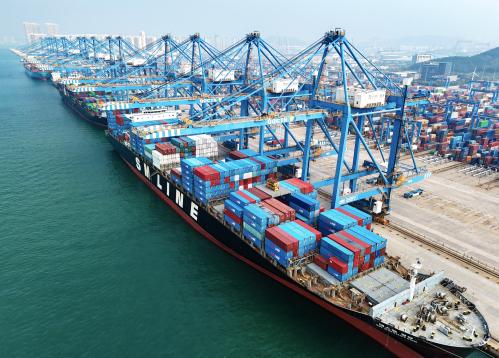The transformation of the German Democratic Republic (GDR or East Germany) has important lessons for Cuba as the island opens up to increased banking, agriculture and telecommunications exchange with the U.S. But there is a major difference: the GDR liberalized its political system first, removing the fear that Soviet troops might intervene and the secret police, the Stasi, might round up dissidents. Mikhail Gorbachev’s contempt for GDR leader, Erich Honecker, and his policy of self-determination resulted in Soviet restraint towards political liberalization in the GDR, as well as Poland and Hungary.
Twenty five years later, Cuba faces an opportunity to liberalize its economy and maybe its politics. President Obama’s decision to restore full diplomatic relations with the island nation enables U.S. institutions to open accounts at Cuban financial institutions, offers U.S. entities in third countries—such as in the European Union and Canada—to transact business with Cubans in third countries, provides access in Cuba to U.S. banks through the use of credit cards and permits the export of telecommunications infrastructure as well as building materials and agricultural equipment to private citizens and small farmers. In short, Cubans will be allowed to access U.S. banking, telecommunications and agricultural sectors. This is the limit of what Obama can undertake through executive action in these areas. To lift sanctions, he must seek legislative changes.
With access to U.S. credit, Cubans will be able to take advantage of President Raúl Castro’s offer to privatize government owned stores and restaurants. However, privatization and access to credit do not alone restructure a centrally controlled economy. A market-based pricing and monetary system, together with a regulatory framework, have to be created. There is no shortage of potential advisors from the former GDR, Poland and Hungary who can advise Havana on the preferred transformation models. The process can be painful with the ending of subsidies, but the prospect of a market economy with opportunities to create wealth lured many in Eastern Europe and may draw many more in Cuba to become entrepreneurs.
The economic transformation in the GDR was accompanied by loosening of the political system and the holding of free elections. The archives of the infamous Stasi were opened, enabling citizens to examine their own files and discover who had spied upon them. This opening, known by the Russian word glasnost, changed the culture of East Germans. It enabled citizens to criticize their government, complain of shortages and mock political leaders. Are the Castro brothers willing to do the same?
Fidel Castro objected fiercely to glasnost when Mikhail Gorbachev visited Cuba in April 1988. He claimed that glasnost would undermine the communist system and he was right. To what extent will his brother Raúl seek to still control independent voices on the island? With increasing access to Internet and social media, will he continue the overt repression of dissidents? Cuban dissident, Yoani Sánchez, has a considerable following on her blog but mostly off-island. Two years ago she was permitted to visit Europe and the United States to deliver her candid assessment of life on the island. Upon return, she has continued to call for political openings and started a digital magazine. Others have followed her, although artists have still been called into the police precinct for questioning. Today, we cannot write that glasnost has reached Cuba.
The removal of fear among citizens to express themselves is the single most important factor that ended Soviet regimes in the GDR and elsewhere. With the knowledge that a jail sentence no longer followed criticism and street protests, citizens in the GDR came out in their thousands in October 1989 to protest the regime. When the GDR’s spokesman inadvertently blurted over the radio that travel to the West could occur “now,” thousands of Berliners heard him and rushed toward the Berlin Wall. The guards had no instructions to shoot and were quickly overwhelmed by fellow East Germans tearing down the dreaded Wall.
Is there an equivalent in Cuba? Not yet. Instead, both the Cuban and U.S. governments have approached the openings cautiously, taking each measure step by step. Washington fears the rush of Cuban citizens jumping into boats to reach Florida, and Raúl Castro tests each liberalizing step in an agonizingly slow manner.
Global events are now pushing both Washington and Havana to move faster. Both of Cuba’s sponsors, Russia and Venezuela, are in serious financial straits and must deal with a 46 percent fall in the price of petroleum. For a second time in 25 years, the Castro brothers face a serious decline in energy and aid from their principal patrons. In 1991, they asked their citizens to create in Cuba renewable energy and foods. Now, they are offering a new alternative, namely access to U.S financing and the chance to expand their small enterprises.
If Raúl Castro opens up the political system step-by-step, we may see a shift to liberalism. His release of 53 political prisoners is a good start, but the test will come when he allows his critics to test the limits of Cuba’s new freedoms. We should follow Castro’s treatment of his fellow citizens closely over the next few months to evaluate the Cuban people’s response to U.S. openings.


Commentary
What Lessons Does the Opening of the German Democratic Republic in 1990 Teach Us about the U.S. Opening to Cuba?
December 23, 2014